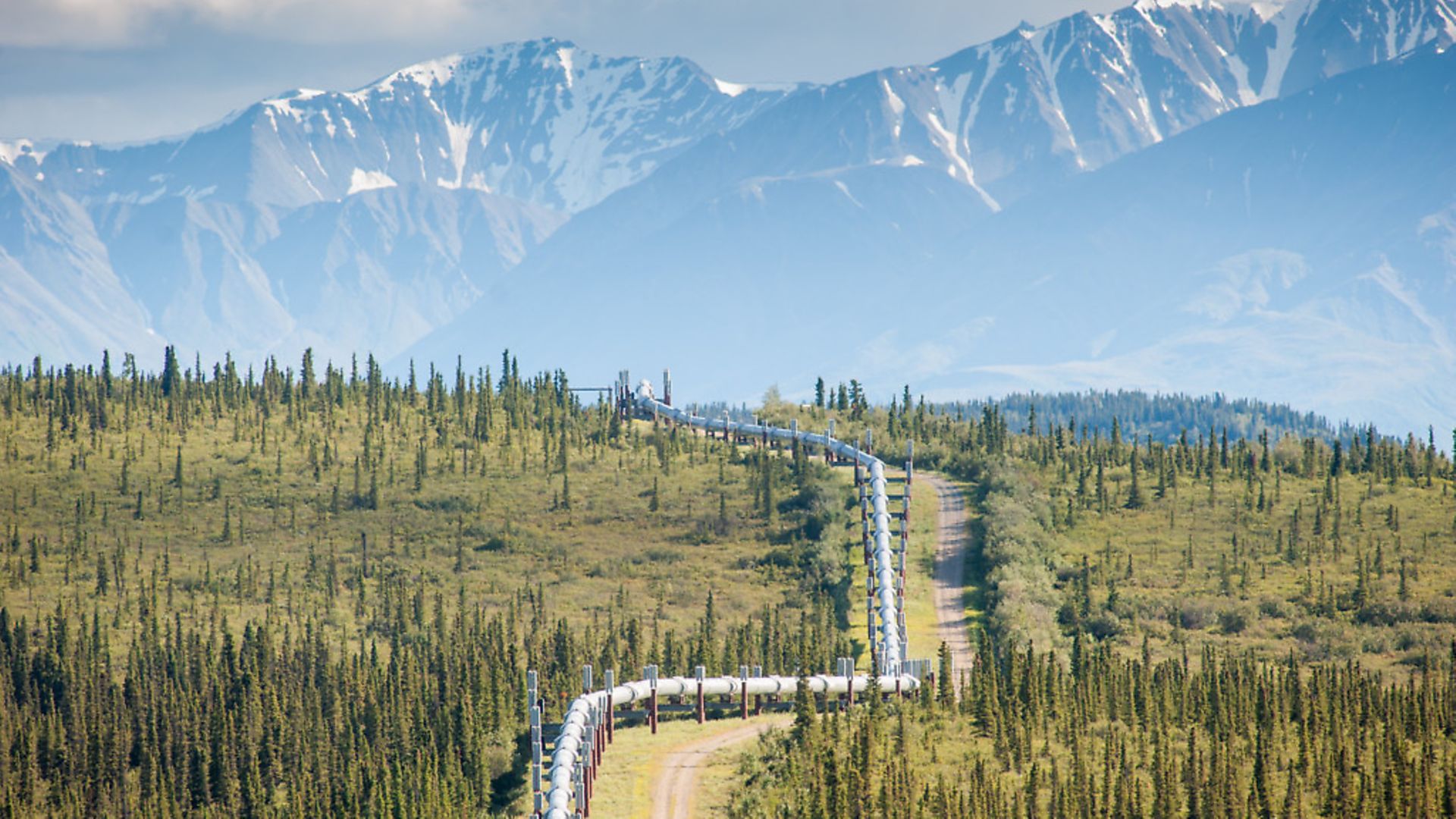
The die-hard Republican state is growing frustrated with its leaders, says BONNIE GREER
The first time most people in the United States, or probably anywhere else, heard the term ‘the Lower 48’ was around the time that Senator John McCain introduced his running mate, the then governor of Alaska, in the 2008 presidential election.
Alaska – which became the 49th state of the United States on January 3, 1959 – is a rather mysterious and remote place to most Americans. Located on the northwest end of the North American continent, it is separated from the rest of the US West Coast by British Columbia.
Most Alaskans use the term ‘Outside’ now, instead of ‘the Lower 48’ to describe the rest of the country except for Hawaii. No matter, Alaska is never considered ahead of the curve.
In terms of its land mass, Alaska is a panoply of extremes: Point Barrow is the northernmost part of US territory; Utqiagvik is the northernmost incorporated place in all US territory, with a population of 4,000; Fairbanks, the northernmost city with more than 20,000 residents. And Anchorage, with more than 100,000.
The state’s National Petroleum Reserve is the furthest point from human habitation in the entire nation. The highest mountain peak in North America is located in Alaska. It was known as Mount Mckinley until the indigenous Koyukon people had it returned to its traditional name, the name they call it: Denali. And it is at Attu Island that the last sunset of the day sets on the USA.
To get an idea of how rural Alaska is compared to much of the US, take Wasilla: This is the town in which Sarah Palin was mayor, from 1996 to 2002, before she became chairwoman of the Alaska Oil and Gas Conservation Commission, and then governor of Alaska. By the 2018 censor estimate, Wasilla is home to about 11,000 people.
The state’s largest city, Anchorage, has roughly 300,000 inhabitants, the state capital, Juneau, 31,000.
By comparison, three million fans watched the Mets play baseball in New York City in 2017 alone. And Alaska is far away.
It takes about eight hours to fly from New York City to London. Approximate flight time from New York City to Anchorage: 10 hours.
Juneau, Anchorage and the areas around the University of Alaska are Democrat strongholds, while the Fairbanks region, which includes a town called North Pole, are rock solid Republican. On the whole, though, Alaska is considered ‘ruby red’: safe Republican. The state only voted Democrat in the 1964 Lyndon Johnson wipe-out of Barry Goldwater. Mitt Romney won the state by 15%. And so did Trump. Yet Alaskans also tend to be independent, which is why the New Mexican libertarian Gary Johnson won a few votes in 2016.
Some say that Alaska votes Republican because it is not urban. And there is a growing contention that city dwellers tend to be liberal and rural dwellers conservative. That the city itself is what makes a person a liberal. Yet revolution can happen in Alaska, too. In a manner of speaking.
It is said that in choosing as his running mate in 2008 the youngest and first female governor of the state known as the Last Frontier (“our state may be cold, but our governor is hot,” some chanted), Senator John McCain wanted to shake things up a bit.
After all, the Democrats were running an African American as their presidential candidate, an historic first. So the Republicans wanted to shatter some glass, too.
McCain, an otherwise meticulous man, later admitted that he had not vetted Palin. She had been a disrupter in Alaskan state politics and that was the way he saw himself, too. He left the vetting in relation to her knowledge of politics, history, anything at all, to others.
Her other plus was the fact that she came from a town called Wasilla, a place many urban Democrats would have considered to be some hamlet buried under the snow. McCain thought that this country versus city divide helped further contrast him with the ultra-urban Obama.
Some Republicans did privately admit at the time that McCain had, in choosing Palin – to use an American football term – ‘thrown long’. But Palin represented something that McCain needed: people outside the urban areas.
Some folks ask how bad the Republicans have to be to lose in Alaska. From 2003 to 2010, the FBI conducted a widespread investigation into political corruption in the state that focused on the oil, fish and for-profit prison industries and links to local Republicans. The scandal, and those involved, were sometimes referred to as, simply, “The Corrupt Bastards Club”. The GOP still gets elected.
So, how bad do the Republicans have to be to lose in Alaska? The party’s newly-elected governor Mike Dunleavy may about to find out. Of five governors being targeted for recall elections – a typical Republican Party tactic to get rid of Democrats – only one is a Republican: Dunleavy.
His critics are after him for massive cuts to the Alaska state budget. He has cut a portion of the budget of the University of Alaska; portions of Medicaid, the equivalent of the NHS; funding for early childhood education; libraries; the Alaska State Council on the Arts; the environment. The whole nine yards.
Alaska has the right to recall elected officials for what is considered ‘malfeasance’, a right that they can exercise by petition. The Dunleavy recall is a bipartisan effort led by a former state Democrat senator and delegate to the 1955 Alaska State Constitutional Convention and a former state Republican senator from Anchorage.
In addition to being the only state with such a recall process targeting a Republican governor, Alaska is getting known for something else: It is one of that new phenomena of states with growing majority/minority counties – areas in which the non-white population outside of cities is in the majority. And minorities largely vote Democratic.
It is they and their growing numbers in counties across the land that helped tip areas from red (Republican) to blue (Democrat) at the 2018 midterms. Alaska may be about to help lower the boom, not only on its Republican governor, but on the Trumpland ‘Lower 48’ at next year’s presidential election.
Warning: Illegal string offset 'link_id' in /mnt/storage/stage/www/wp-includes/bookmark.php on line 357
Notice: Trying to get property 'link_id' of non-object in /mnt/storage/stage/www/wp-includes/bookmark.php on line 37







